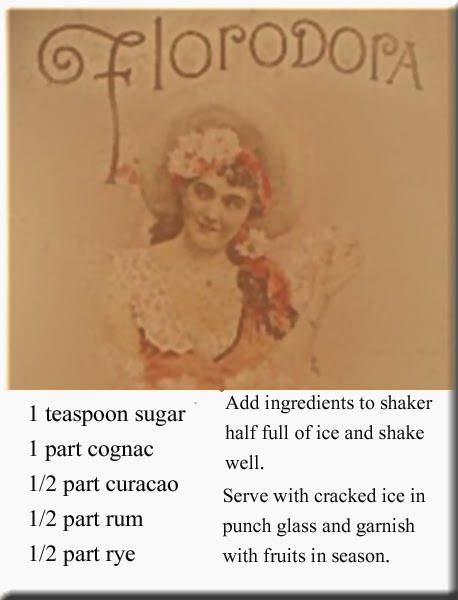 Let me start by disabusing you of any
thought that this blog post will have anything to do with a great Marilyn
Monroe movie, or that sexy "ice cream blonde" of yesteryear - Thelma Todd aka "Hot Toddy." Rather, since the weather is turning
chilly, we are going to talk about a couple of traditional hot drinks. Those pics are a great hook though, aren't they?
Let me start by disabusing you of any
thought that this blog post will have anything to do with a great Marilyn
Monroe movie, or that sexy "ice cream blonde" of yesteryear - Thelma Todd aka "Hot Toddy." Rather, since the weather is turning
chilly, we are going to talk about a couple of traditional hot drinks. Those pics are a great hook though, aren't they?
The first, and one of my favorites is Hot Gin, a drink with a considerable history
dating to the 1700's (by 1825 "piss-quick"
was established in English slang for gin and water). Medically, hot gin was was prescribed for dozens of ailments. Considered a stimulant during the
day, a drink to "promote repose" in the evening, and a treatment for
cholera. Into the 1890's, a hot gin was
considered appropriate for female "pelvic complaints" such as
dysmenorrhea - used to such a degree that the medical journal Lancet expressed concern that hot gin
was contributing to alcoholism amongst women.
Hot gin is also featured in English
literature, making several appearances in works by authors as prominent as
Charles Dickens. In Oliver Twist, Fagin
gives Oliver a hot gin after his first
meal with the artful Dodger, and the gang, to put him to sleep. Later, Mr. Bumble, on seeing a newspaper item
regarding Oliver, dashes off "...actually in his excitement" leaving
his evening "glass of hot gin and water untasted." Criminal waste!
Traditional recipes for Hot Gin vary only slightly and I enjoy
them all. If you have a favorite gin,
use it. If not, use whatever is handy.
The earliest recipe employs water, hot or
cold - "Hot acts the quickest" per an early 1800’s writer, in a 2:1
ratio. This was nicknamed “soap-suds”
or, as previously mentioned, “piss-quick.”
 A more genteel and tasty drink is the Hot Gin Sling. Put one spoon of sugar in a hot drink glass,
or cup, fill half way (about 4 ounces) with hot water, add a jigger of gin,
stir, add a piece of bruised lemon peel and dust with nutmeg.
A more genteel and tasty drink is the Hot Gin Sling. Put one spoon of sugar in a hot drink glass,
or cup, fill half way (about 4 ounces) with hot water, add a jigger of gin,
stir, add a piece of bruised lemon peel and dust with nutmeg.
Toss in a couple of cloves and a bit of
allspice, and you now have a Hot Spiced
Gin.
To make a Hot Gin Punch (my preferred variant) add the juice of 1/4 lemon,
and a thin slice of lemon to the basic Hot
Gin Sling recipe.
The gin drinks above are essentially a gin
"toddy." Today a toddy, or "tottie", is nothing more than
spirits mixed with hot water, sugar, and spices or flavoring to taste. Spirits,
water (hot or cold), and sugar were the basic toddy of yore.
We primarily think of a toddy as using
whiskey - bourbon, rye, scotch, or Canadian, will do. Traditionally, after a hospitable dinner, a
host would bring a kettle of hot water to the table, along with assorted
spirits such as whiskey, brandy, rum, and port, allowing the guests to mix "toddies"
to their taste. Tumblers and wine
glasses were the glassware of choice In the home.
Like hot gin, the hot toddy was considered
to be of medicinal value. It was
recommended for the treatment of colds (including those of children), gout, and
heat stroke.
A stanza from a "dramatic" poem
penned by Irish dramatist John O'Keefe in 1790 seems more a limerick today - "cannon loud 'gainst cannon ranting; At
his gun, poor Jack see panting; As to lip he lifts the Toddy; Off flies head
and down drops body."
Widely appreciated, the toddy was enjoyed
by notables as Sir Walter Scott, Robert Burns, Ulysses S. Grant, Jefferson
Davis, and Mark Twain. A drink that wears
its years well, continues to be popular today, and is perfect for that quiet
evening at home.
Black
Box Warning - In the 1790's for those preaching
temperance, just as marijuana was regarded the gateway drug by do-goods of my
generation, the toddy was regarded a the gateway drink to alcoholism in
theirs. The evening toddy was said to
lead to "drams in the morning, and
afterward (drinkers) have paid their lives as the price of their folly."
Having been warned, tempt fate and try a toddy this
evening by substituting your favorite spirit, including flavored ones, for the
gin in the recipes above and changing the name accordingly. The Hot
Gin Punch becomes a Hot Rum Punch
or Hot Whiskey Punch. Too strong?
Titrate the water to your taste. Too sweet, or not sweet enough---adjust your
sugar. If you like cinnamon sticks or
vanilla beans, use them.
The Hot Gin and the Toddy are "old as the
hills" and some of the easiest to personalize.
 |
| Book of Toasts, Autrim, 1902 |







